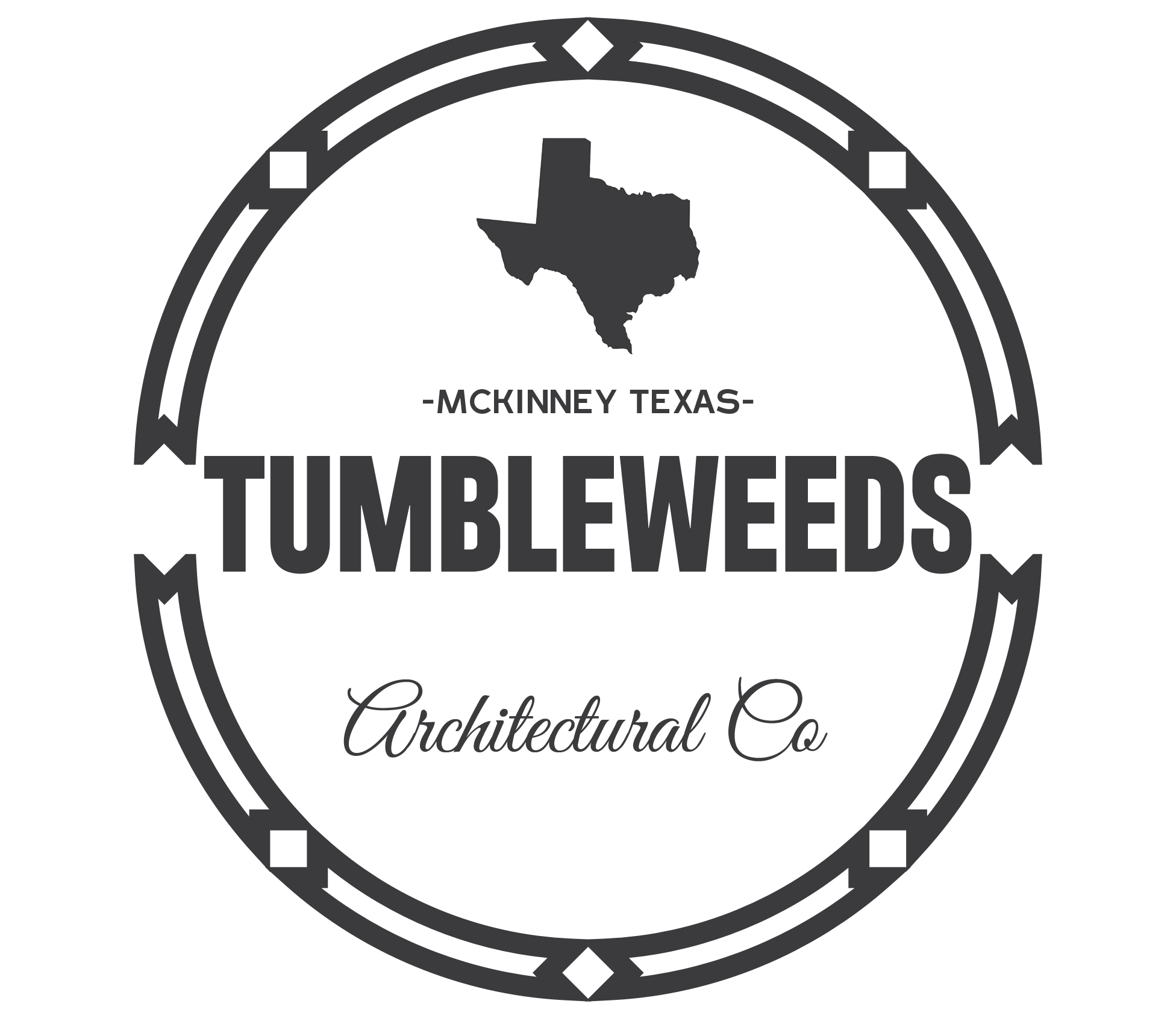Pressure washing is a powerful cleaning method that can transform the appearance of your home’s exterior surfaces.
We will explore the benefits of pressure washing, the surfaces you can clean, and whether or not you can use this method on your roof.
We will also discuss alternatives to pressure washing your roof and provide tips on how to safely pressure wash this delicate area of your home.
Whether you are a DIY enthusiast or considering hiring a professional, this article will guide you through the process of keeping your home looking clean and well-maintained.
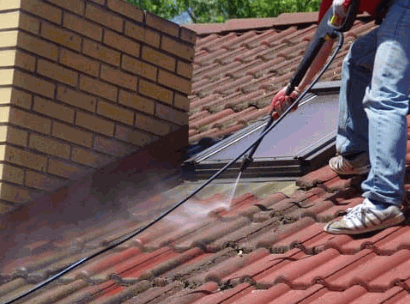
What Is Pressure Washing?
Pressure washing, also known as power washing, is a cleaning method that utilizes high-pressure water spray to remove dirt, grime, moss, algae, lichen, and other contaminants from various surfaces.
This method is widely used for cleaning roofs, driveways, decks, and sidings, among other exterior surfaces. The high-pressure water stream efficiently eliminates stubborn stains and buildup, restoring surfaces to their original glory. In terms of roof cleaning, pressure washing is ideal for removing moss, algae, and dirt from shingles without causing damage. The use of soft wash techniques allows for gentler cleaning on delicate surfaces, ensuring effective yet safe results. The efficiency and effectiveness of pressure washing make it a popular choice for homeowners and businesses looking to maintain the cleanliness and appearance of their properties.
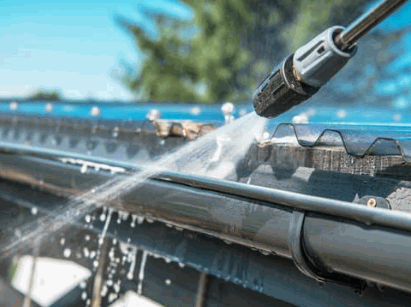
What Are The Benefits Of Pressure Washing?
Pressure washing offers numerous benefits, including the removal of stubborn stains, improving curb appeal, preventing damage to surfaces, and saving time and effort in cleaning tasks.
When pressure washing surfaces, not only eliminates dirt, grime, and mildew but also enhances the overall appearance of your property. The high-pressure water spray can reach hidden nooks and crannies, restoring surfaces to their original glory. By blasting away accumulated debris, pressure washing helps in preventing corrosion and extends the longevity of various materials. The time efficiency of this cleaning method is unmatched, as it swiftly cleans large areas, making outdoor maintenance a breeze.
Removes Stubborn Stains
Pressure washing effectively removes stubborn stains from surfaces, enhancing the overall curb appeal properties.
The high-pressure water jets used in pressure washing are perfect for blasting away dirt, mold, mildew, grease, and other tough stains that can build up on various surfaces. Whether it’s removing oil stains from driveways, grime from siding, or moss from outdoor patios, pressure washing is a versatile and efficient solution. By revitalizing the appearance of these surfaces, pressure washing not only enhances the aesthetic appeal of a property but also plays a crucial role in maintaining its value and prolonging its lifespan.
Increases Curb Appeal
Pressure washing significantly increases the curb appeal of homes and properties, adding to their overall value and aesthetic appeal.
When dirt, grime, and mold accumulate on the exterior surfaces of a property, it can detract from its visual appeal. Pressure washing not only removes these unsightly elements but also reveals the true colors and textures of the surfaces, giving the property a fresh and well-maintained look.
Investing in regular pressure washing can contribute to preserving the structural integrity of the property by preventing the buildup of harmful substances that may cause deterioration over time. This, in turn, can increase the property’s longevity and reduce the need for costly repairs in the future.
Prevents Damage To Surfaces
Pressure washing helps prevent damage to surfaces such as roofs, reducing the risk of leaks and preserving the integrity of features like skylights and vents.
By removing dirt, grime, mold, and mildew, pressure washing not only enhances the appearance of surfaces but also prolongs their lifespan. The high-pressure water stream effectively cleans deep into the pores of materials, ensuring a thorough clean that manual methods often cannot achieve. This process is particularly crucial for maintaining the functionality and aesthetic appeal of outdoor structures exposed to harsh weather conditions. Regular pressure washing can prevent the buildup of organic matter that could lead to costly repairs in the future.
Saves Time And Effort
One of the key benefits of pressure washing is its ability to save time and effort in cleaning tasks, making roof washing and maintenance more efficient.
By utilizing the strength of high-pressure water streams, pressure washing swiftly removes dirt, grime, mold, and algae from roofs without the need for extensive scrubbing or harsh chemicals.
The convenience of pressure washing equipment makes it an ideal solution for property maintenance, as it can cover large surface areas in a fraction of the time compared to traditional cleaning methods.
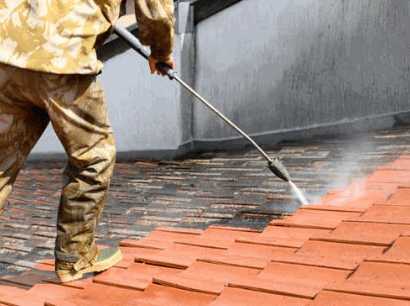
What Surfaces Can You Pressure Wash?
Pressure washing is suitable for a variety of surfaces, including concrete, brick, wood, vinyl, and asphalt, making it a versatile cleaning method for different areas.
In terms of cleaning driveways, sidewalks, and patios, pressure washing proves to be highly effective in removing stubborn stains, dirt, and grime. It can be used to clean exterior walls, fences, and even outdoor furniture with ease. This method is gentle enough to clean delicate surfaces like wood decks without causing damage, yet powerful enough to tackle tough stains on concrete and brick surfaces. Its adaptability across different materials makes it a go-to choice for homeowners and professional cleaners alike.
Concrete
Concrete surfaces can benefit greatly from pressure washing to remove accumulated debris, and grime, and prepare for spring cleaning.
Pressure washing involves using high-pressure water spray to clean concrete surfaces efficiently. This method is particularly effective in removing stubborn stains, mold, mildew, and dirt buildup that can accumulate over time.
One common issue faced by concrete surfaces is the buildup of grime, especially in areas with high foot traffic or exposure to the elements. This can not only detract from the appearance of the surface but also pose potential health hazards.
Seasonal maintenance plays a crucial role in ensuring the longevity and aesthetics of concrete surfaces. As part of routine maintenance, pressure washing can revitalize and rejuvenate these surfaces, making them look almost new.
Find out more: What Pressure Washer To Clean Concrete
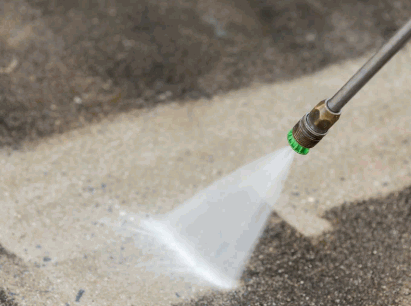
Brick
Brick surfaces can be effectively cleaned using pressure washing to eliminate dirt, moss, and other contaminants with the use of high-pressure water streams.
In terms of pressure washing brick surfaces, the process involves the use of specialized equipment that can deliver water at high pressures to dislodge and remove built-up grime. This method is particularly effective in removing moss, which tends to thrive on porous brick surfaces. The challenge lies in ensuring that the water pressure is not too high, as it could damage the bricks. Finding the right balance is essential to achieve thorough cleaning without causing harm.
- One key aspect to consider is the efficient use of water during the cleaning process. By adjusting the pressure settings and angles of the water stream, pressure washing can be done effectively while conserving water. This not only helps in achieving optimal cleaning results but also contributes to sustainability efforts.
- Focusing on specific areas with tougher stains or moss growth may require more targeted treatment. In such cases, using specialized cleaning solutions in conjunction with pressure washing can enhance the cleaning process and ensure a more thorough removal of contaminants.
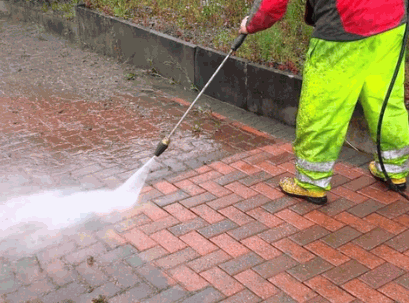
Wood
Wood surfaces can be pressure washed to remove algae, lichen, and other growths, using appropriate pressure settings to avoid damage.
When pressure washing wood surfaces, it’s crucial to consider the type of wood to determine the optimal pressure level. Softwoods like pine are more vulnerable to damage compared to hardwoods such as oak. The direction of the wood grain should be taken into account to prevent splintering and gouging. Addressing issues like algae and lichen requires not only the right pressure but also the use of environmentally friendly cleaning solutions to ensure effective removal without harming the wood. By employing a gentle technique with the correct equipment, you can revitalize your wooden surfaces without causing any harm.
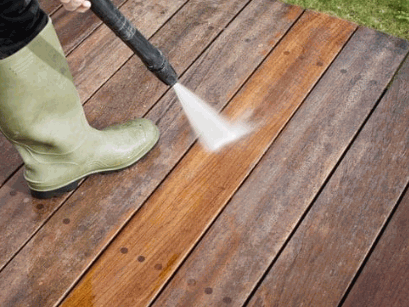
Vinyl
Vinyl surfaces can benefit from pressure washing with the use of suitable pumps, hoses, and wands to ensure effective cleaning without causing damage to the material.
When preparing for a vinyl surface pressure washing project, it’s important to gather the necessary equipment such as a high-pressure pump and a variety of wands to adjust the water flow. The pump should have enough power to create sufficient pressure for effective cleaning but not too much that it could damage the surface. The wands, with different nozzle attachments, allow for customization of the spray pattern to suit the specific cleaning needs. By adjusting the settings on the equipment, users can control the pressure and flow of water, ensuring a thorough and safe cleaning process.
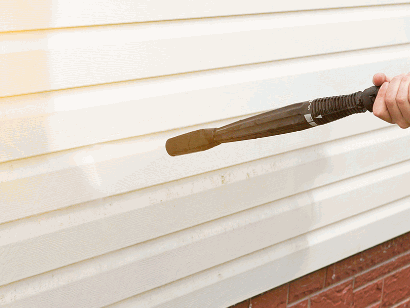
Asphalt
Asphalt surfaces, including shingles, can be cleaned using pressure washing methods and appropriate cleaning chemicals, with the right nozzle attachments for thorough cleaning.
When pressure washing asphalt surfaces, it is crucial to start by clearing the area of any debris and loose dirt. This helps prevent clogging and ensures a more effective cleaning process.
- Choosing the correct cleaning chemicals is essential to effectively remove stains, mold, and grime from the surface without causing damage.
- Be mindful of the nozzle attachment you use – utilizing a nozzle with a wider spray pattern for general cleaning and a narrower pattern for tougher stains can make a significant difference in the outcome.
Adjusting the pressure of the washer according to the surface being cleaned is vital in preventing any potential damage. By following these steps and using the right tools, you can achieve a well-cleaned asphalt surface that looks as good as new.
Can You Pressure Wash Your Roof?
Pressure washing your roof can be an effective method for cleaning and maintaining its appearance, but it requires careful consideration of the roof type and suitable techniques to avoid damage.
One of the key benefits of pressure washing is its ability to remove accumulated dirt, debris, and even mold from the roof surface efficiently. Regular roof cleaning can prolong the lifespan of your roof and enhance the overall curb appeal of your home.
Improper pressure washing techniques, such as using excessive pressure or the wrong type of equipment, can lead to potential damage. It’s essential to choose a professional with experience in roof washing to ensure the job is done safely and effectively. Utilizing the correct pressure levels and nozzles is crucial to prevent any harm to your roof materials.
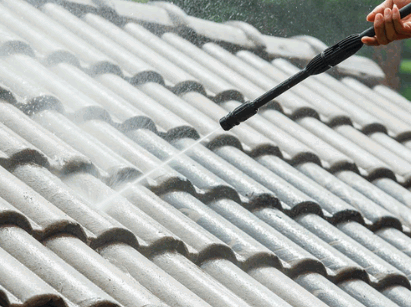
Types Of Roofs That Can Be Pressure Washed
Certain types of roofs, such as asphalt shingles or composite shingles, can be safely pressure washed to remove dirt and debris, especially on larger roof sizes.
Pressure washing is a versatile cleaning method that can effectively tackle stubborn stains, mold, and algae growth on roofs without causing damage.
- Pressure washing is particularly beneficial for larger roofs, as it can save time and effort compared to manual scrubbing or chemical treatments.
- The high-pressure water stream can reach into nooks and crannies, ensuring a thorough and uniform cleaning process.
Types Of Roofs That Should Not Be Pressure Washed
Certain roofs, like cedar shake roofs, may not be suitable for pressure washing due to their material composition and susceptibility to damage, requiring alternative cleaning methods such as soft washing.
Pressure washing on delicate surfaces can lead to irreparable damage, causing leaks, cracks, and loosening of shingles.
Soft washing, on the other hand, utilizes a lower-pressure water stream along with specialized cleaning solutions to gently remove dirt, mold, and algae without harming the roof’s integrity.
When considering cleaning methods, it’s vital to take into account factors like roof age, condition, and any existing damage, as these can impact the effectiveness and safety of the chosen technique.
How To Pressure Wash Your Roof Safely?
To pressure wash your roof safely, it is crucial to use low-pressure, appropriate cleaning solutions, and consider the age and condition of the roof to prevent damage and ensure effective cleaning.
When pressure washing your roof, remember that using high pressure can lead to shingle damage and water intrusion, so always opt for a gentle approach. Chemicals should be used cautiously, following manufacturer instructions to avoid any adverse effects on the roof or surrounding vegetation. Soft wash techniques are ideal for delicate roofs or those with moss growth, ensuring a thorough cleaning without causing harm. Regular maintenance checks before pressure washing can help identify any weak spots or potential areas of concern, allowing for timely repairs and ensuring the longevity of your roof.
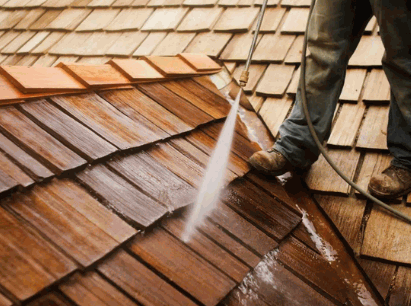
Use Low Pressure
When pressure washing a roof, it is essential to use low-pressure settings to avoid causing damage to the shingles or underlying structures, utilizing appropriate equipment like roof pumps and accumulators.
Low-pressure settings play a crucial role in ensuring that the cleaning process is effective without compromising the integrity of the roof. By using specialized equipment such as roof pumps, operators can maintain control over the pressure applied, preventing any potential harm. Proper pressure control is not only about cleaning efficiency but also about safeguarding the longevity and appearance of the roof, making it a vital aspect of roof maintenance routines. Without the right pressure levels, there is a risk of dislodging shingles or causing water seepage, leading to costly repairs.
Use Appropriate Cleaning Solutions
Selecting the right cleaning solutions is crucial when pressure washing a roof, with considerations for surfactants, GPM machines, and effective chemical mixes to achieve optimal cleaning results.
In terms of roof cleaning, the choice of cleaning chemicals greatly impacts the outcome. Surfactants play a vital role in breaking down dirt and grime, facilitating the cleaning process efficiently. GPM machines, with their power and precision, help in applying the cleaning solution effectively to various roof surfaces. Different roof materials such as asphalt shingles, metal roofs, or tiles require specific chemical formulations to prevent damage and ensure a thorough cleaning. Understanding the compatibility of the chemicals with the surface material is essential for a successful cleaning project.
Be Mindful Of The Roof’s Age And Condition
Before pressure washing a roof, it is essential to conduct a thorough inspection to assess its age, condition, and potential repair needs to ensure the cleaning process does not compromise the roof’s lifespan.
Roof inspections play a crucial role in determining the appropriate cleaning methods and preventing further damage.
Inspecting the roof allows for identification of any existing issues such as loose shingles, cracks, or structural weaknesses. These findings can significantly impact the cleaning outcomes, as a structurally compromised roof may not withstand the pressure washing process effectively.
Addressing repairs beforehand is imperative to maintain the integrity of the roof and prevent water leaks or other damage in the future.
What Are The Alternatives To Pressure Washing Your Roof?
If pressure washing is not suitable for your roof, alternatives such as soft washing, hand scrubbing, or professional roof cleaning services can provide effective and safe cleaning solutions.
Soft washing is a gentle method that uses low-pressure water combined with eco-friendly cleaning solutions to remove dirt, algae, and mold from your roof without causing damage. This technique is particularly beneficial for delicate roofs or those with sensitive materials.
On the other hand, manual scrubbing entails physically cleaning the roof surface by hand using soft brushes or sponges. While labor-intensive, this method allows for detailed cleaning and ensures no residue is left behind.
For those who prefer a hassle-free solution, hiring professional roof cleaning services is a convenient option. Experienced professionals use specialized equipment and techniques to efficiently clean your roof while adhering to safety precautions.
Soft Washing
Soft washing offers a gentle yet effective cleaning approach for roofs using specialized chemicals approved by manufacturers, ensuring thorough cleaning while maintaining warranty requirements.
Manufacturers-approved chemicals play a crucial role in the soft washing process as they are specifically formulated to eliminate mold, mildew, algae, and other contaminants without causing damage to the roof material.
Compliance with warranties is essential during roof cleaning to avoid voiding any guarantees provided by the manufacturer, ensuring that the cleaning process meets their guidelines and specifications.
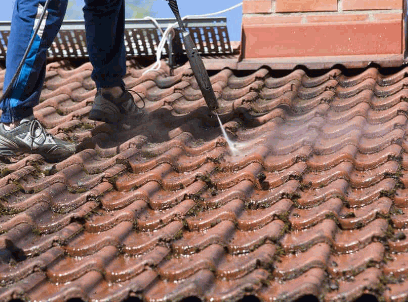
Hand Scrubbing
Hand scrubbing involves manual cleaning of roofs, especially tile roofs, to address areas like grout and stubborn stains that may require precision and control not achievable with high-pressure washing methods.
In terms of hand scrubbing, the technique is generally utilized for more delicate roof materials such as tiles, slate, or even cedar shakes. This method allows for a targeted approach, ensuring that intricate areas like grout lines are thoroughly cleaned without causing damage to the roofing material.
The benefits of hand scrubbing extend beyond just the removal of stubborn stains; it also helps preserve the integrity and longevity of specific roof types that can be sensitive to high-pressure washing. Uniquely designed for precision cleaning, hand scrubbing is ideal for textured surfaces and intricate patterns often found on tile roofs.
Professional Roof Cleaning Services
Engaging professional roof cleaning services can be a convenient option for larger roof sizes or complex structures, where specialists use techniques like leaf blowers and advanced cleaning methods to ensure thorough and efficient cleaning.
One of the key benefits of opting for professional roof cleaning is the enhanced efficiency and thoroughness that experts bring to the task. Professional cleaners have the experience and knowledge to handle the intricacies of larger roofs and complex designs, ensuring that every nook and cranny is properly cleaned.
Specialized tools such as leaf blowers are utilized by professionals to reach inaccessible areas and remove debris effectively. This targeted approach not only cleans the surface but also helps prevent potential damage and prolonging the lifespan of the roof.
